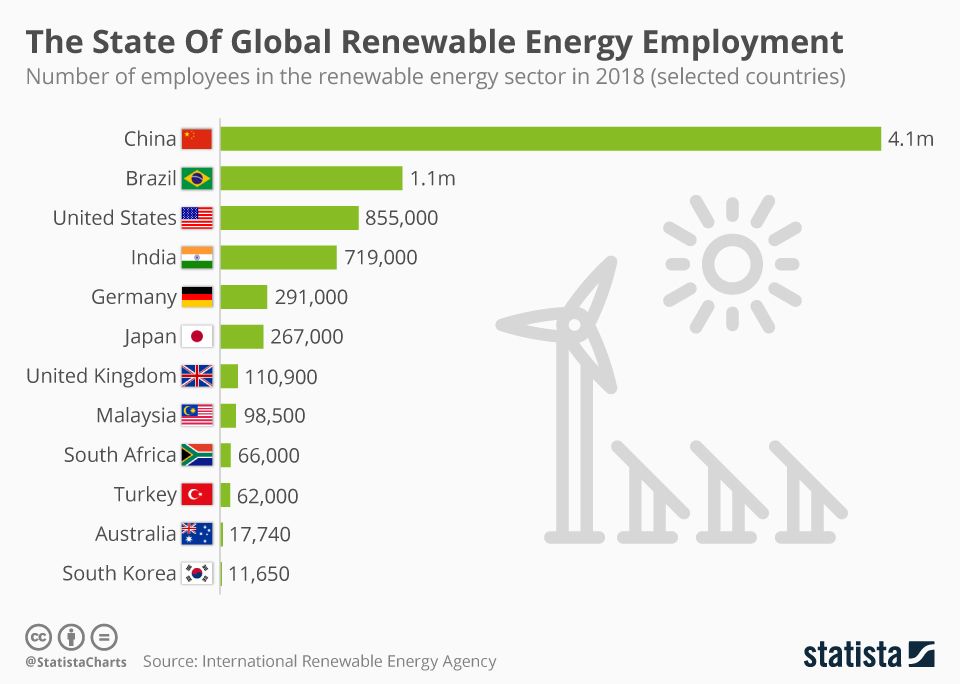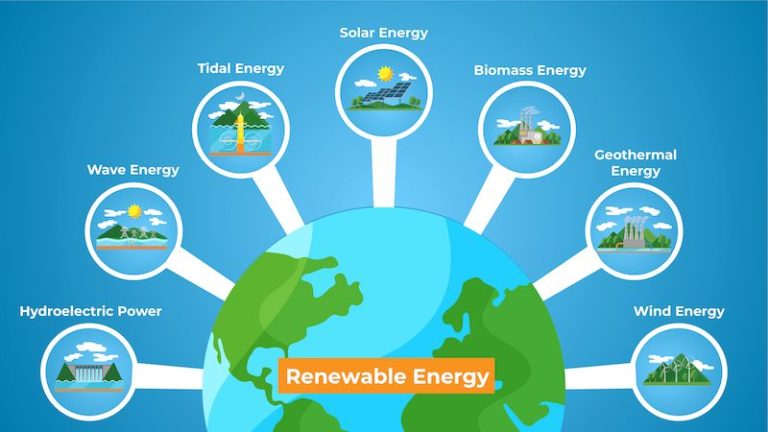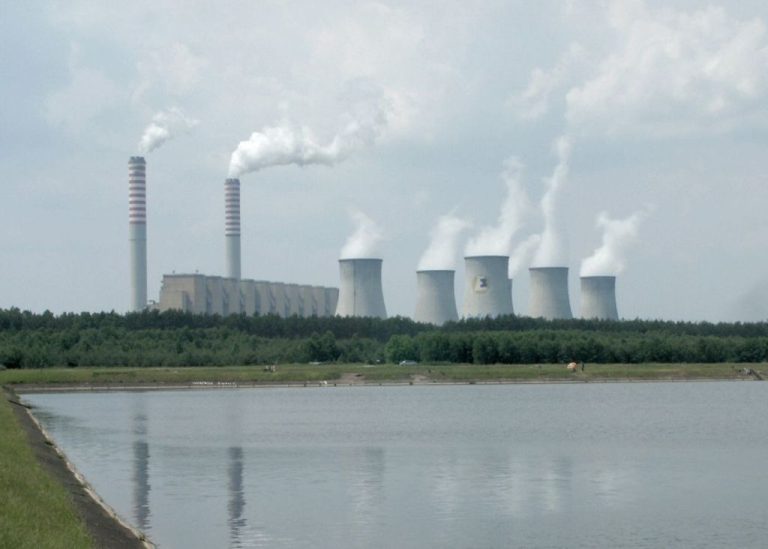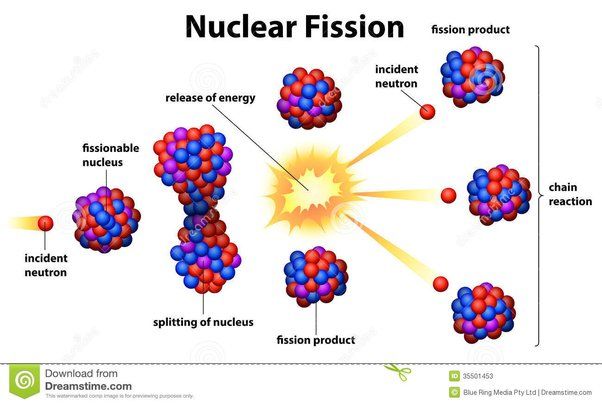Renewable Energy Percentage By Country

Renewable energy comes from natural sources or processes that are constantly replenished. Some of the most common renewable energy sources are solar, wind, hydropower, geothermal, and biomass. In recent years, renewable energy has seen substantial growth as countries around the world seek to reduce carbon emissions and reliance on fossil fuels. According to one report, the share of renewables in global electricity generation jumped from under 20% in 2010 to over 26% in 2018.
Defining Renewable Energy
Renewable energy comes from natural sources that are constantly replenished. Some of the most common renewable energy sources include:
- Solar power – Energy from the sun used for electricity and heating/cooling.
- Wind power – Using wind turbines to generate electricity.
- Hydropower – Generating electricity using the energy from flowing water.
- Geothermal – Using the earth’s internal heat for heating and electricity generation.
- Biomass – Plant or animal based materials used for energy production.
Unlike fossil fuels which are finite, renewable energy sources are constantly replenished and will never run out. This makes them a sustainable long-term energy solution. Renewable energy also produces little to no greenhouse gas emissions, which is a major advantage over traditional energy sources like coal and natural gas.
According to the U.S. Energy Information Administration (EIA), 11% of total U.S. energy consumption and 17% of electricity generation came from renewable energy sources in 2018. As technology improves and costs decrease, adoption of renewables is expected to continue growing in the coming decades.
Global Renewable Energy Usage
Renewable energy accounted for roughly 29% of global electricity generation in 2020, according to the International Energy Agency (IEA). This represents a modest increase from 27% in 2019 and 26% in 2018. The top renewable energy sources were hydropower (16%), wind (6%), solar PV (3%), and bioenergy (2%).
The global renewable energy percentage has been steadily rising over the past decade, driven by falling technology costs and supportive government policies. However, the growth has not been consistent across all regions. Europe generated 38% of its electricity from renewable sources in 2020, while that figure was only 12% in the Middle East. Significant regional differences exist based on resource availability, infrastructure, and policy support.
The IEA projects that renewables will supply 30% of global electricity by 2025 if current trends continue (IEA). However, experts suggest this pace must accelerate significantly in order to meet Paris Agreement climate targets. The IEA’s net zero pathway involves renewable energy increasing to over 60% of global electricity by 2030 and close to 90% by 2050.
Renewable Energy Leaders
When looking at renewable energy usage globally, several countries stand out as leaders. According to the International Renewable Energy Agency (IRENA), the countries with the highest percentages of renewable energy as a share of their total final energy consumption in 2020 were:
- Iceland – 76.1%
- Norway – 69.2%
- Sweden – 57.9%
- Finland – 43.1%
- Latvia – 41.3%
Iceland is a clear leader, with over three-quarters of its energy consumption coming from renewable sources like hydropower and geothermal. The Nordic countries of Norway, Sweden and Finland also stand out for their high adoption of renewables like hydro, wind and biofuels. Factors influencing these countries’ high renewable usage include significant natural resources, cold climates driving heating needs, and supportive policies.
According to this source, some emerging markets like Honduras and Kenya also have high renewable percentages, demonstrating global momentum.
Renewable Energy Laggards
Some countries lag far behind in adopting renewable energy sources. According to WorldAtlas, the countries with the lowest percentages of renewable energy are:
16. Singapore, 0.00%
17. Belarus, 0.02% (Source)
18. Eritrea, 0.02%
19. Cuba, 0.10%
Other countries with very low renewable energy usage include Saudi Arabia (0.02%), Uzbekistan (0.21%), and Kuwait (0.22%). Many of these countries rely heavily on fossil fuels and have not made significant investments in renewable energy infrastructure and adoption.
In Europe, the countries with the lowest renewable energy percentages are Luxembourg (7.05%), Malta (7.27%), Belgium (9.35%), and the Netherlands (11.51%) as of 2021 according to Wikipedia’s list (Source).
The reasons for low renewable energy adoption vary by country, but often include abundance of fossil fuels, lack of governmental policies, high costs compared to conventional energy, and insufficient infrastructure. However, many of these laggard countries have set future renewable energy targets, signaling a shift underway.
Factors Influencing Adoption
A country’s adoption of renewable energy sources depends on several key factors:
Geographic Factors
Access to renewable resources – Having strong solar, wind, hydro or geothermal resources makes adopting renewables easier. Landlocked countries may struggle to harness offshore wind or tidal power. Desert regions often excel in solar power.
Climate – Colder regions like Scandinavia can tap geothermal energy for heating. Tropical countries benefit from year-round sun and hydropower from rainy seasons.
Population density – Sparsely populated areas have more open space for large solar and wind farms. Densely populated cities may lack sufficient renewable resources within their boundaries.
Economic Factors
Wealth – Richer nations can invest more capital into renewable technology and infrastructure. Poorer countries may stick with cheaper fossil fuels.
Stability – Political and economic stability encourages long-term investments in renewables. Uncertainty deters capital deployment.
Energy prices – As renewable costs fall, high fossil fuel prices make them more cost competitive earlier.
Policy Factors
Targets – Governments adopting renewable energy targets spur investment to meet them.
Incentives – Subsidies, tax breaks and feed-in tariffs provide incentives to adopt renewables.
Regulations – Strict environmental regulations discourage fossil fuels and promote renewable alternatives.
Grid access – Priority dispatch access encourages renewable generators to connect to the grid.
Challenges to Adoption
While renewable energy has seen impressive growth in recent years, there remain significant obstacles and barriers to even greater adoption globally. Some key challenges include:
High upfront costs – The upfront capital costs of building large-scale renewable energy projects can be prohibitive, especially for developing countries. The levelized cost of electricity from renewables has fallen sharply, but remains higher than fossil fuels in some markets (IEA).
Intermittency and storage – The intermittent nature of wind and solar poses grid integration and storage challenges. Advancements in battery storage can help overcome this.
Inadequate transmission infrastructure – New transmission lines are needed to connect renewables from remote areas to load centers, which can be costly and face siting challenges.
Regulatory and policy uncertainty – Inconsistent renewable energy policies, subsidies and incentives can hamper investment and growth.
Entrenched fossil fuel interests – The political influence of fossil fuel companies can impede pro-renewables legislation in some countries.
Developing economies – Poorer nations face difficulties accessing capital, technology and expertise to build large clean energy projects.
Future Outlook
Global projections for renewable energy growth show an accelerating pace of adoption across countries and regions. According to the International Energy Agency (IEA), global renewable power capacity is expected to grow by 2,400 gigawatts between 2022-2027, equal to the entire current global power capacity from all sources (IEA). This represents a 30% increase compared to 2021-2026 projections.
The IEA predicts renewable capacity additions could reach over 440 GW in 2023 alone, the largest single-year increase ever. This growth is driven by solar PV expansions in China, EU, India and Latin America as well as wind power growth in China and the EU (IEA). Accelerated growth is expected across most major economies as countries seek greater energy security and aim to meet climate goals.
According to projections by IRENA, the share of renewables in global electricity generation could reach over 60% by 2030 and close to 90% by 2050. Wind and solar will account for over 80% of renewable additions. The pace and scale of growth underscores the ongoing energy transition towards renewable power worldwide (IRENA).
Calls to Action
There are several steps countries can take to accelerate the transition to renewable energy sources:
Governments should develop policies that incentivize renewable energy production and use, such as feed-in tariffs, renewable portfolio standards, tax credits, and subsidies (United Nations, 2022). These financial mechanisms make renewable energy more cost competitive.
Investment is needed in electricity grid infrastructure and energy storage to integrate higher levels of variable renewable energy from solar and wind (International Energy Agency, 2023). Upgrades allow grids to handle two-way power flows.
Permitting and siting processes should be streamlined for renewable energy projects to accelerate deployment. Lengthy approval procedures are a major bottleneck.
Countries can cooperate on large-scale regional energy projects, like offshore wind farms or hydropower dams, and cross-border power interconnectors to share clean electricity.
Fossil fuel subsidies that disadvantage renewables should be eliminated. Pricing carbon appropriately through carbon taxes or cap-and-trade systems further helps renewables compete.
Public and private investments in renewable energy R&D can drive down costs through technology improvements. Continued innovation is key for adoption.
Conclusion
To summarize the key points made, renewable energy is playing an increasingly important role in electricity generation worldwide. Countries that have made the most progress, like Iceland and Norway, now produce nearly all their electricity from renewable sources. Others, like China and India, have rapidly expanded wind and solar capacity in recent years and have enormous potential for future growth. However, major challenges remain before renewables can fully displace fossil fuels globally. Factors like natural resources, government policies, and economic conditions greatly influence how much progress individual countries can make. But with the right strategies and continued investment, the renewable energy transition is achievable and will lead to a more sustainable future. The importance of accelerating this transition cannot be overstated, as renewable energy helps combat climate change, reduces air pollution, creates jobs, and provides energy access to remote populations. With coordinated action across nations, a fully decarbonized power sector powered primarily by renewables is within reach in the coming decades.






